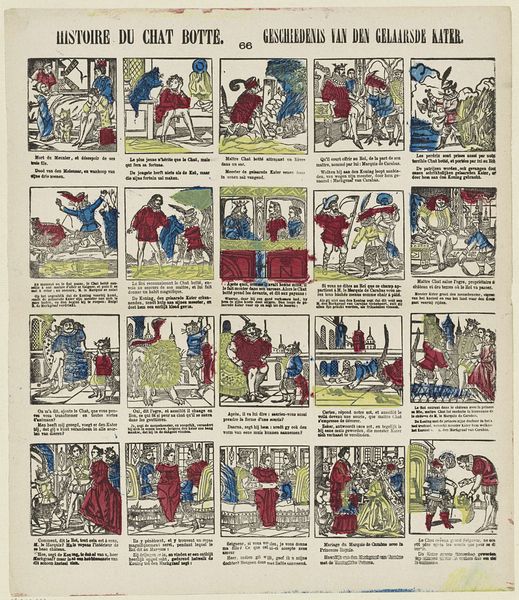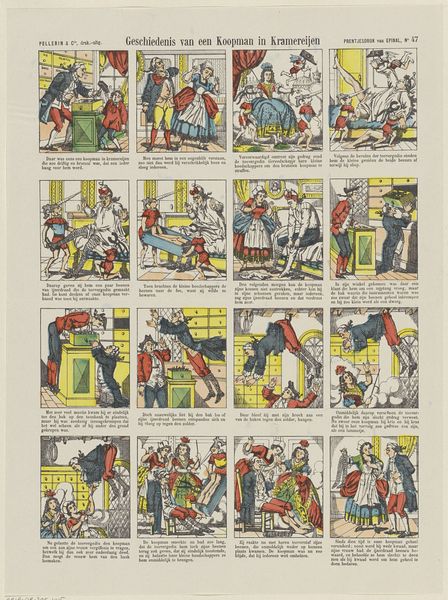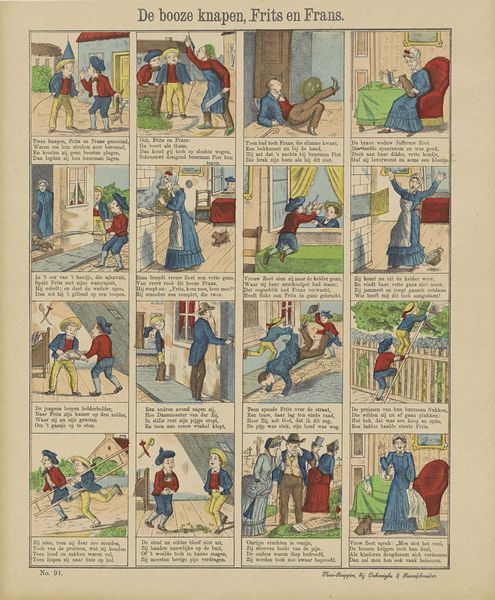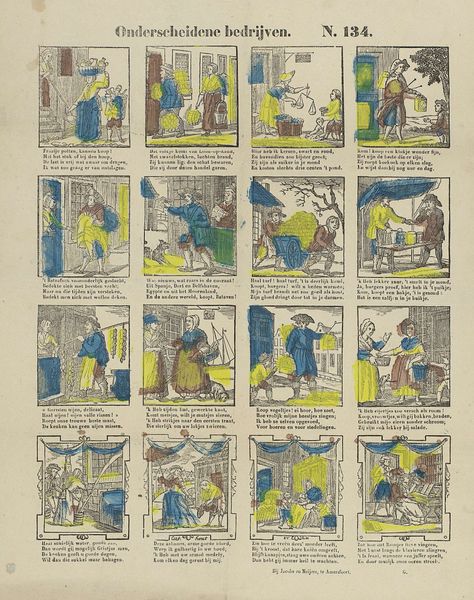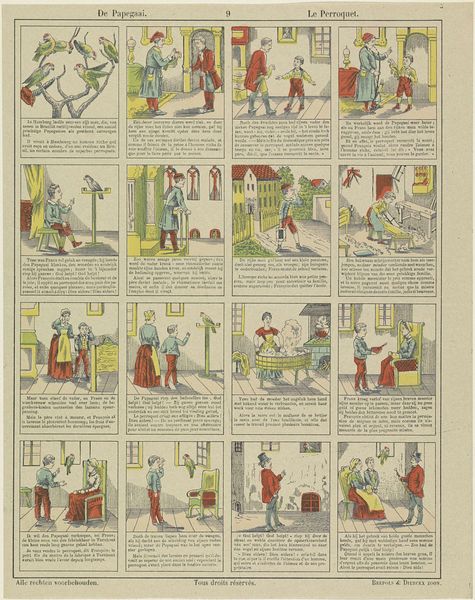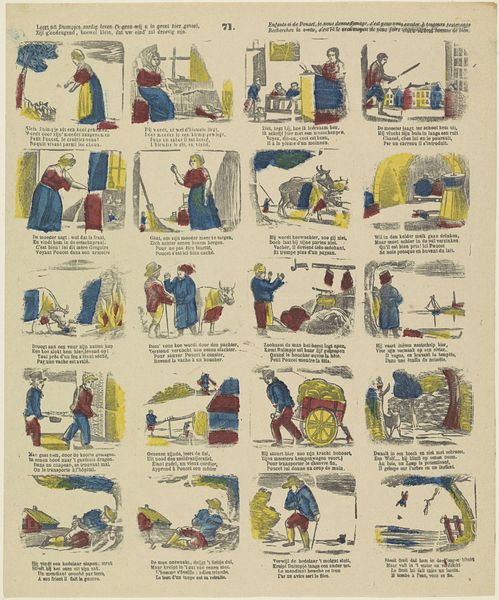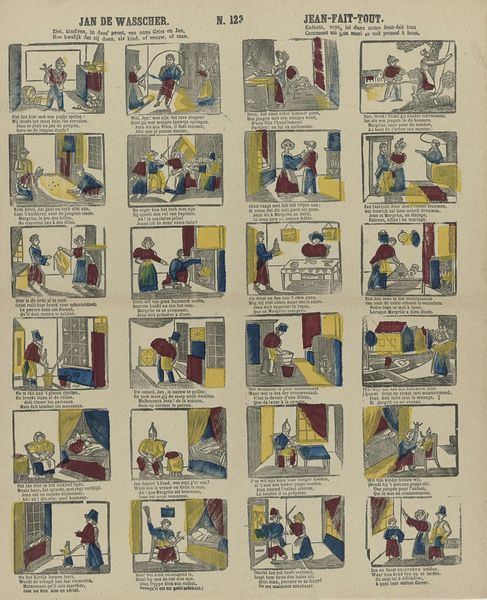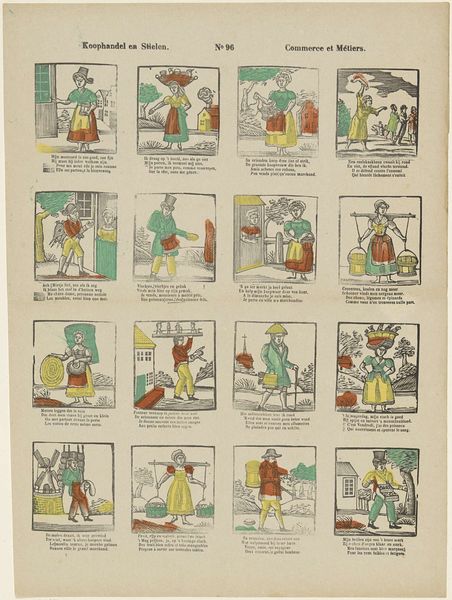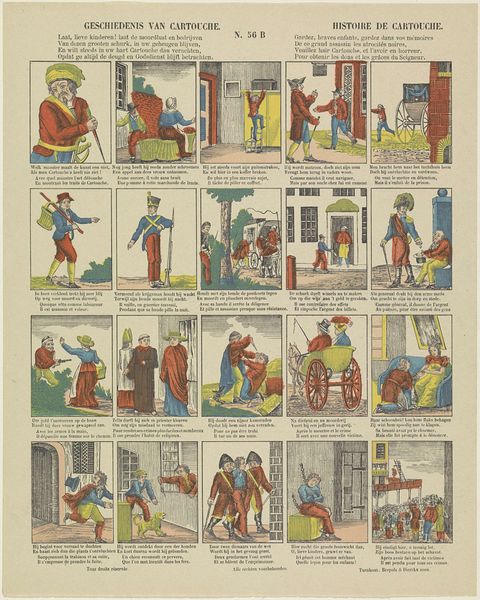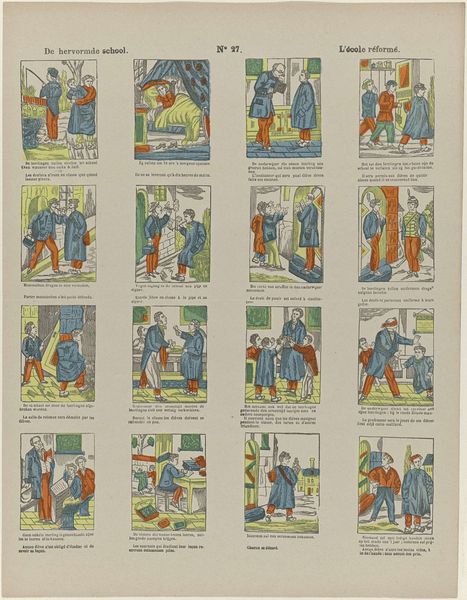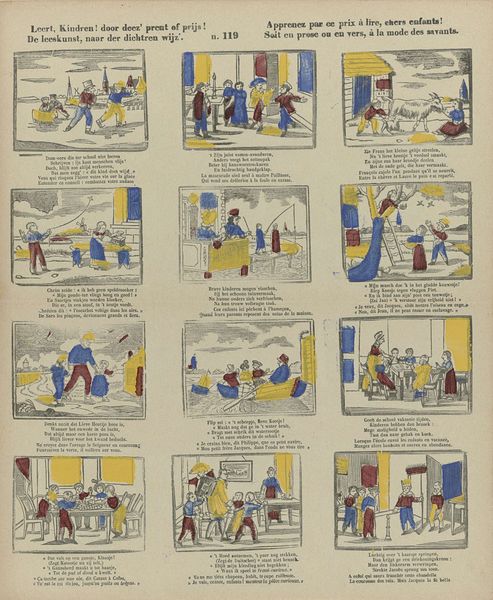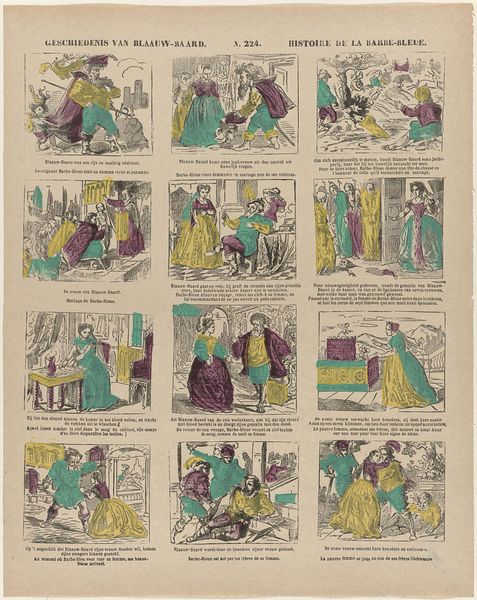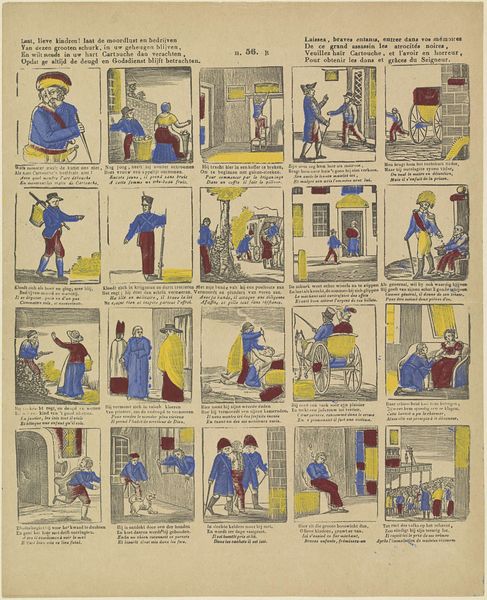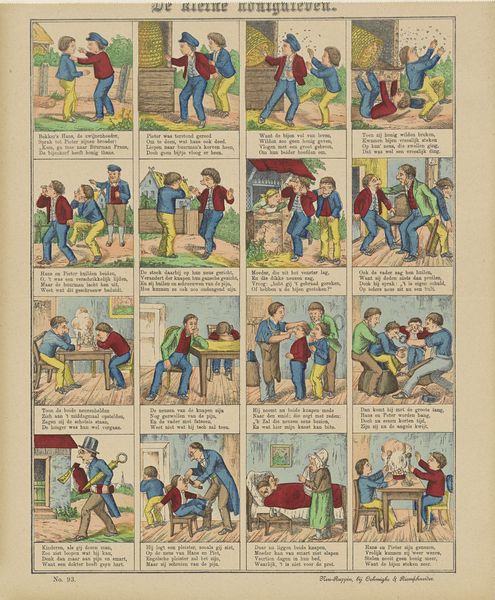
#
comic strip sketch
#
narrative-art
#
comic strip
# print
#
caricature
#
comic
#
genre-painting
Dimensions: height 396 mm, width 296 mm
Copyright: Rijks Museum: Open Domain
Curator: Here we have a chromolithograph print dating to around 1902, titled "Geschiedenis van een ezel," which translates to "History of a Donkey," and it's attributed to Pellerin & Cie. Editor: It strikes me as strangely gentle, especially for a satirical piece. The colors are muted, almost pastel-like, which softens the potentially harsh message of the cartoon strip format. Curator: These comic strips were enormously popular. We need to understand the rise of mass media and print culture in Europe at the time, which democratized access to imagery and narrative for a growing public readership. Didacticism became entertainment. Editor: Absolutely. And consider the material – chromolithography made color affordable and accessible, transforming the visual landscape of everyday life. Each panel has such precise lines for something that could be reproduced easily at scale. What do you make of the content of the panels? The donkey character goes to school... Curator: The narrative itself is a form of social commentary, showing a donkey or "ass," attending school and integrating into human society, satirizing educational ideals and social mobility, perhaps. Think of the politics of knowledge being imparted! Editor: And consider how the labor of teaching is depicted; a repetitive task for both humans and donkey here. You see the characters learning letters, public speaking, getting disciplined and finding romance! Curator: Yes, the print invites questions about assimilation, pedagogy, and the very nature of social progress through the lens of visual culture. Did mass media drive certain social pressures? How did it become implicated within such things? Editor: Well, regardless, seeing how these panels combine accessibility in materials and satirical depictions of societal mobility tells us much about anxieties of its time and what new reading audiences cared about. Curator: Indeed. A potent visual record of its era. Editor: Absolutely; I appreciate the texture, too. Such even coloring but a crisp outcome, something that has an aesthetic value even today.
Comments
No comments
Be the first to comment and join the conversation on the ultimate creative platform.
